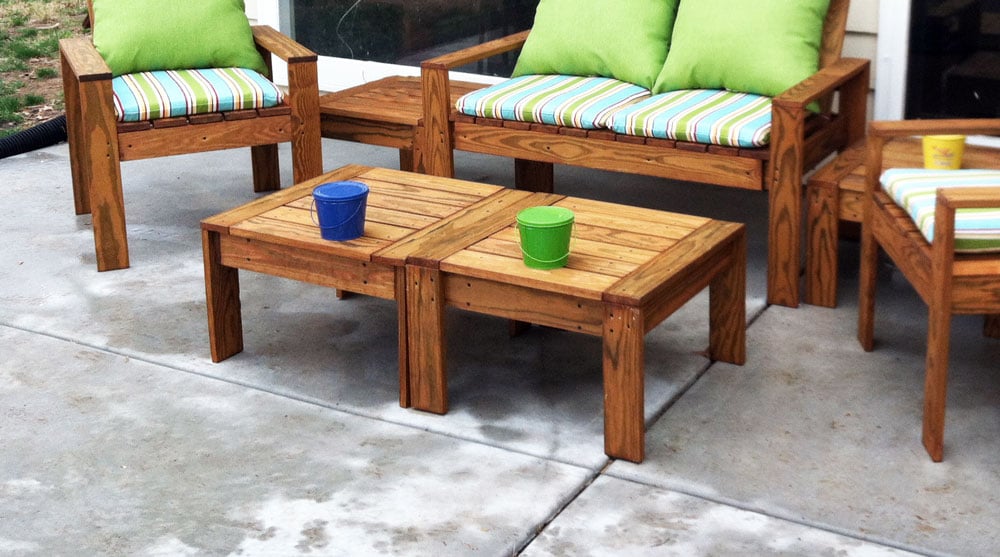
This simple woodworking plan is an ottoman for our modern outdoor sectional collection, and can also be used as a coffee table or accent table. You'll just need a drill and a saw to build. Step by step plans with diagrams, cut list and materials.
Check out the matching sectional plans and learn how to finish wood for outdoor use.
Collections
Dimensions
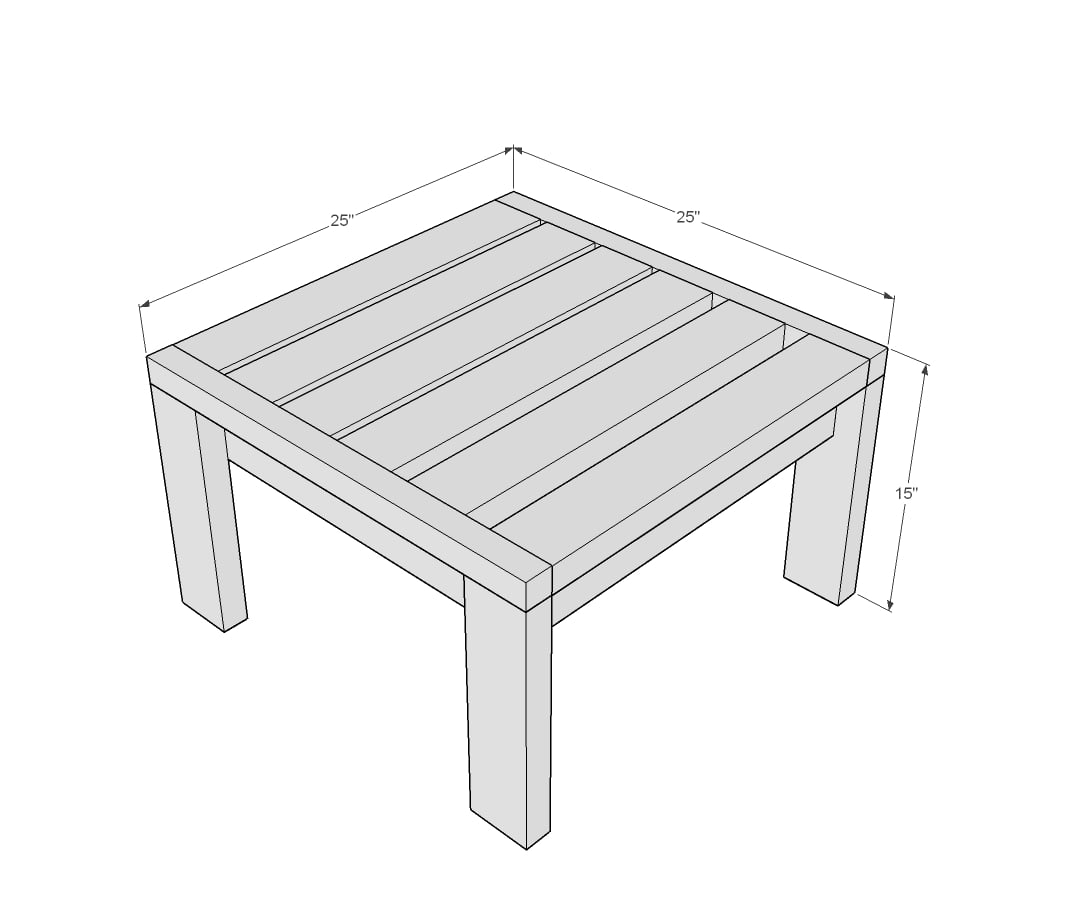
Dimensions shown above, matches dimensions of the Simple Modern Outdoor Sectional Plans
Preparation
Shopping List
1 - 2x2 @ 50"
3 - 2x4 @ 8 feet long (recommend cedar or outdoor appropriate)
60 - 2-1/2" long exterior self tapping wood screws (deck screws or similar)
Cut List
2 - 2x4 @ 22" - seat frame
2 - 2x4 @ 19" - seat frame
4 - 2x4 @ 13-1/2" - legs
6 - 2x4 @ 22" - tabletop boards
2 - 2x2 @ 25" - end trim
Instructions
Step 1
Step 2
Step 3
Finishing Instructions
Preparation Instructions
Since your ottoman is already prefinished, go ahead and do a touchup coat over any exposed screws. You can fill screw holes with a wood filler or paintable silicone. Sand lightly and paint. Add your outdoor sealant.
Room


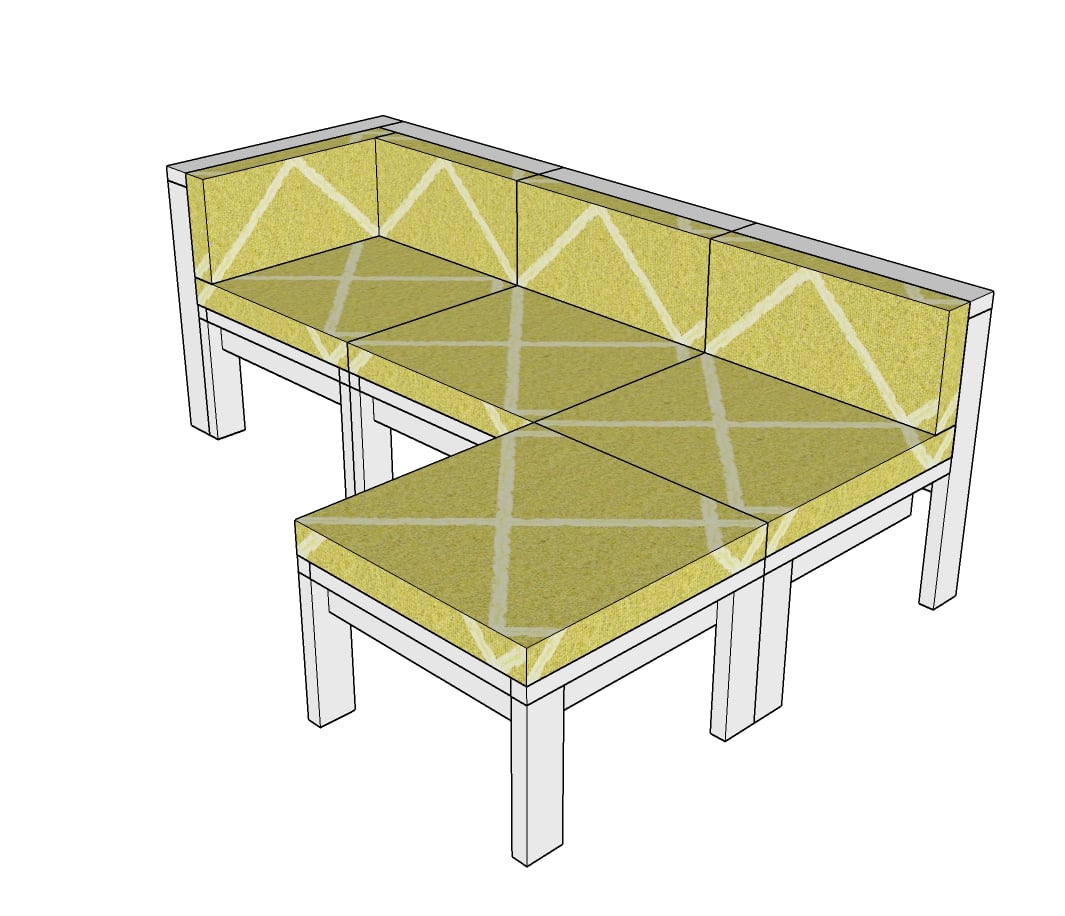






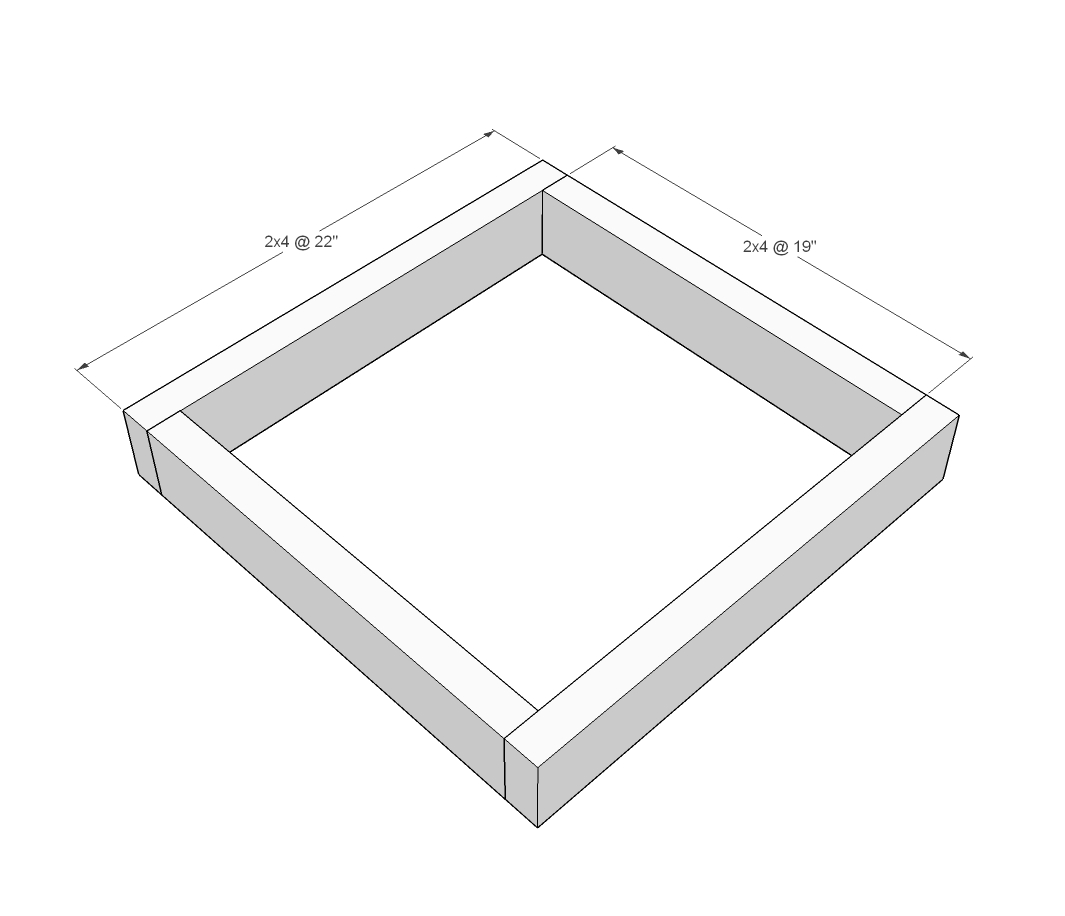
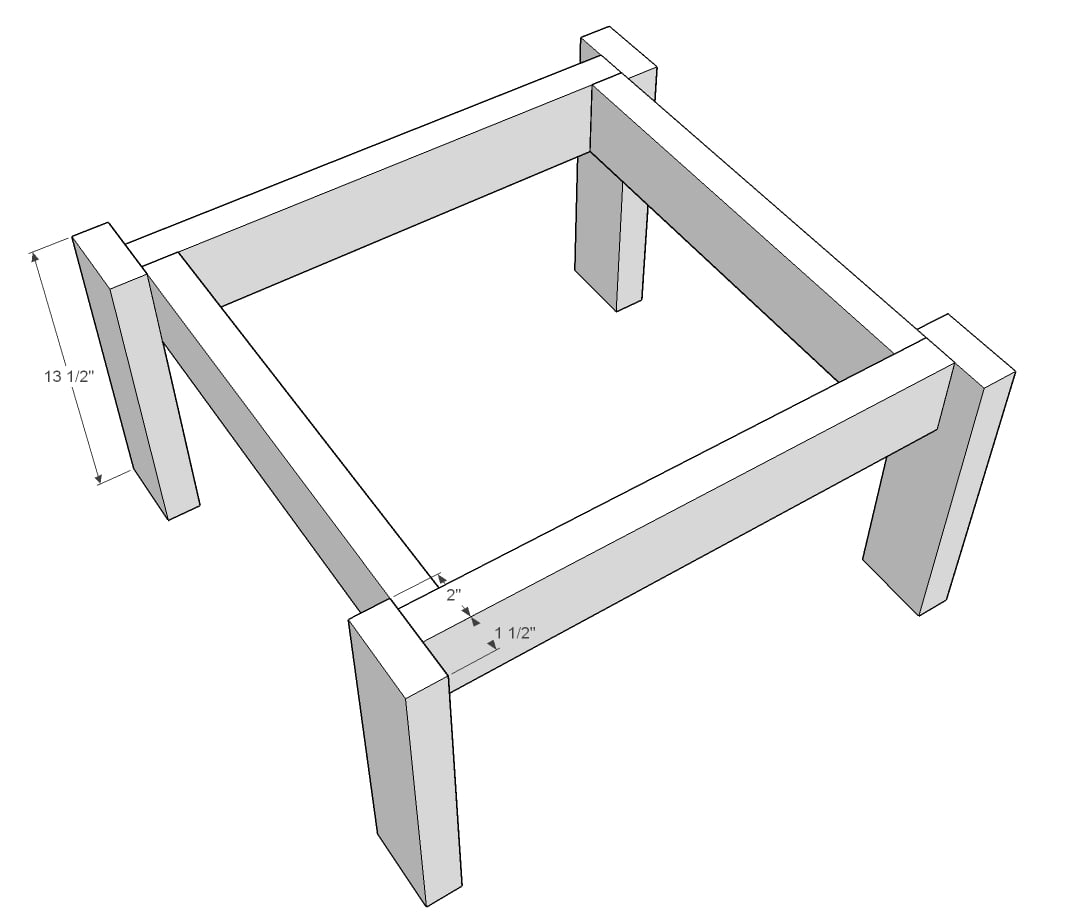
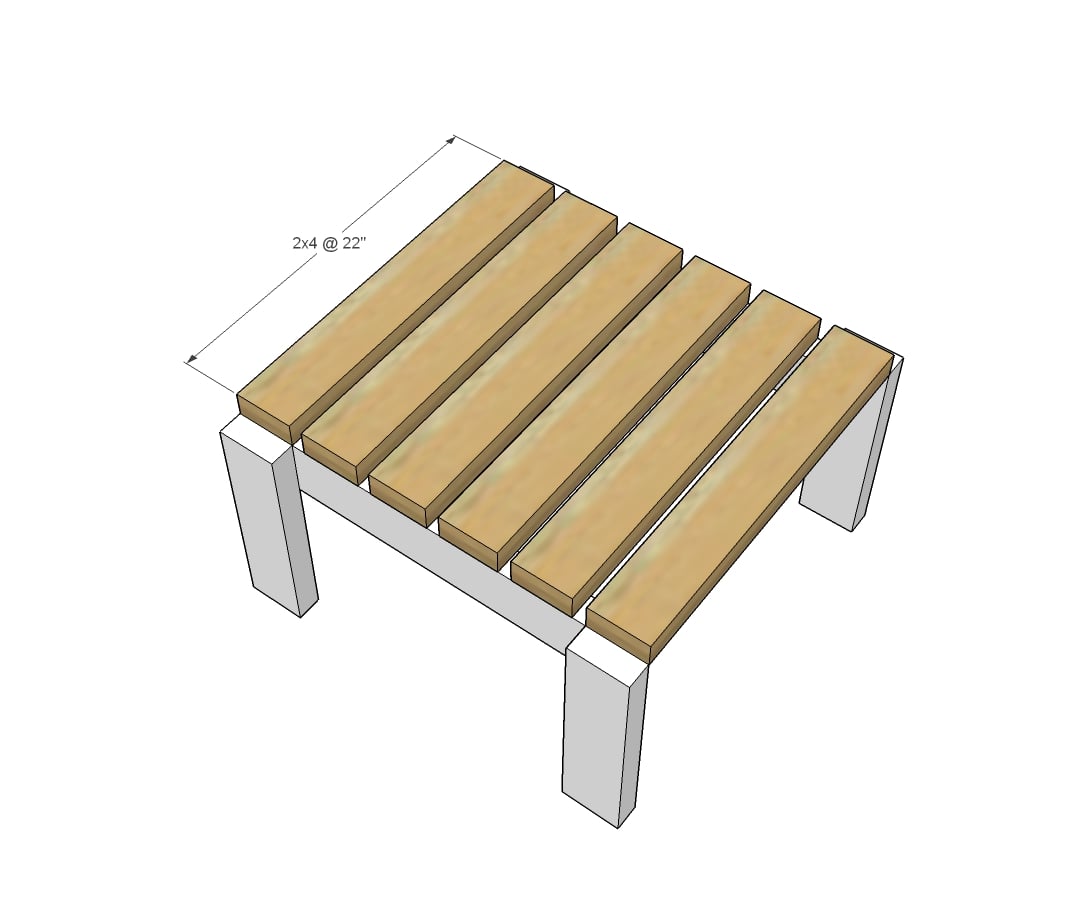
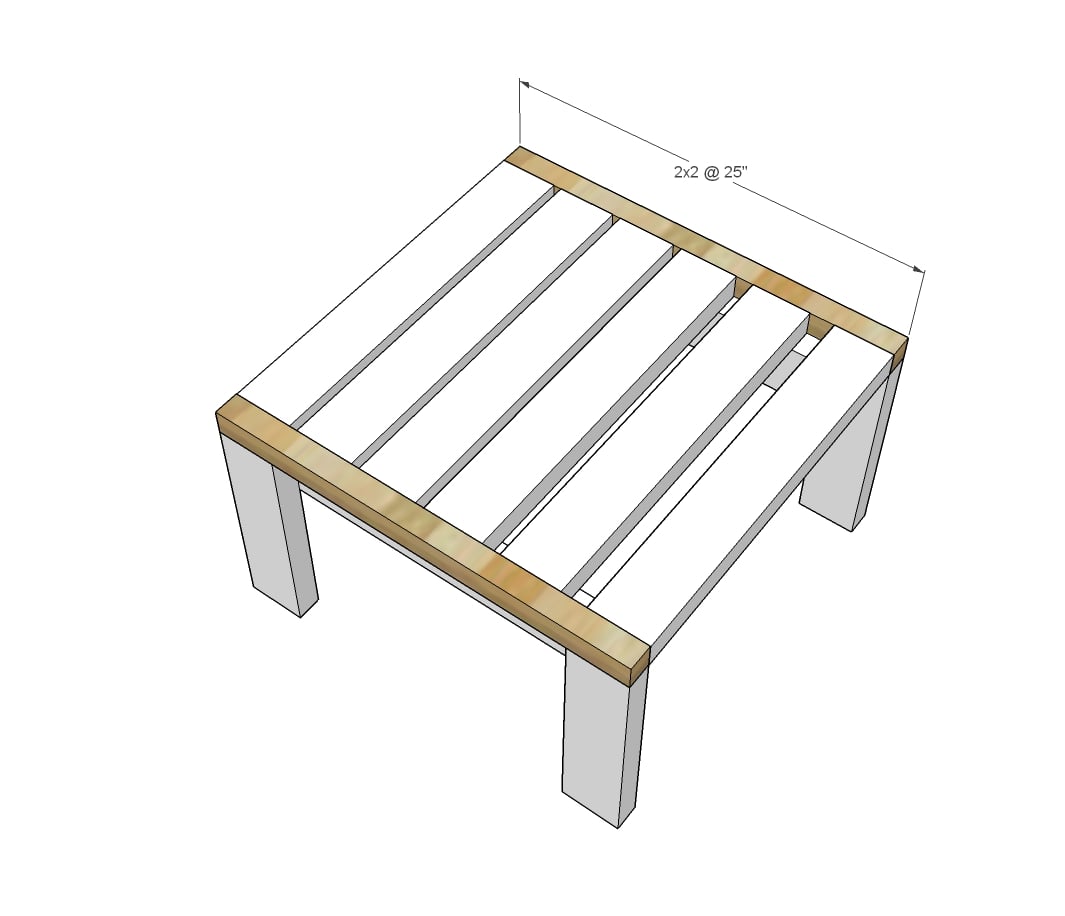

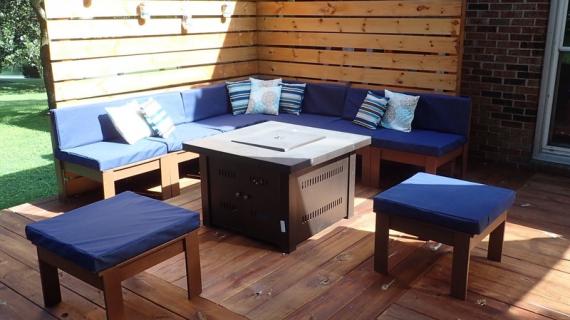
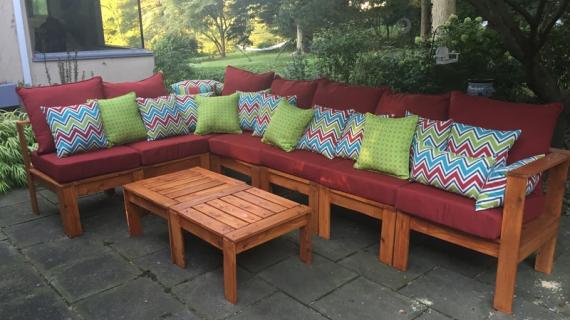
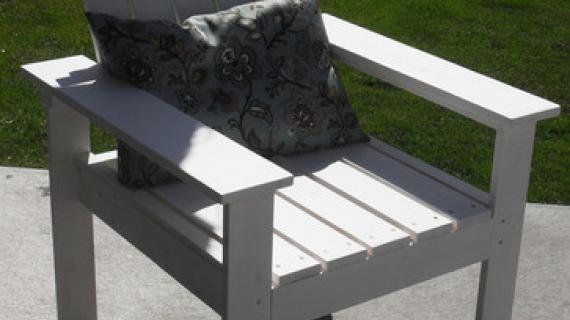
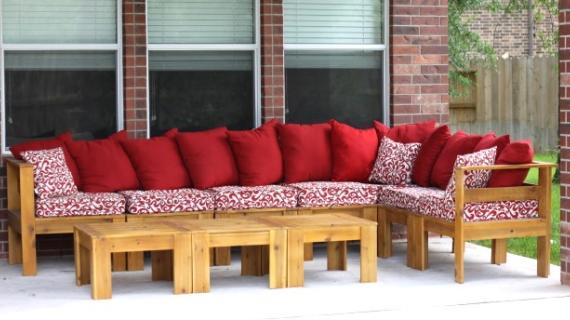
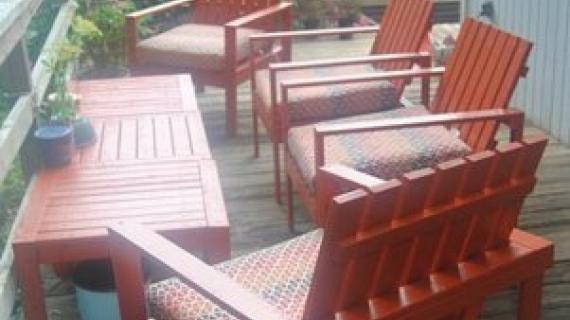
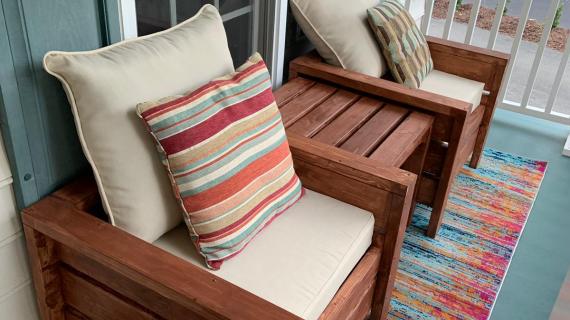
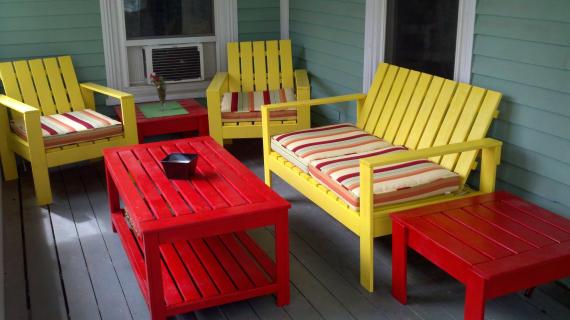
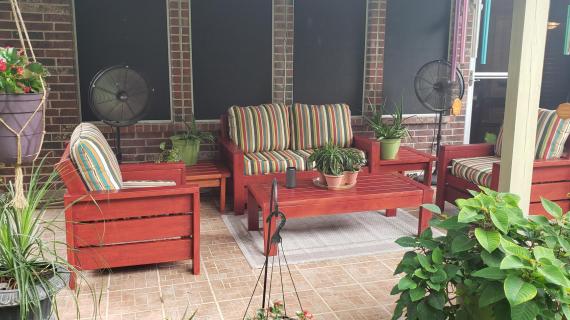
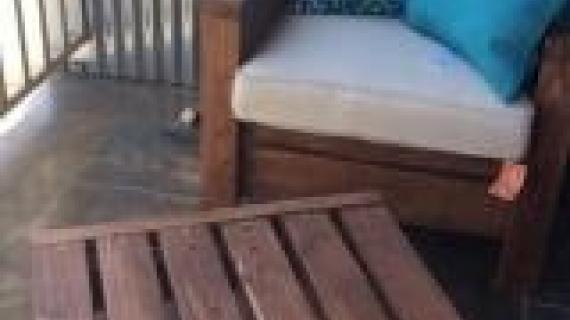

Comments
Kandace (not verified)
Tue, 05/25/2010 - 09:57
ok. I've been wanting
ok. I've been wanting something like this for my living room. Similar to the LACK Ikea tables but I wanted REAL wood. I think I may give this a go but push the slats together so my kids can use it for a coloring surface easier!!
THANKS AGAIN!! I have WAY to many TO DO projects! Stop posting such awesomeness!!
Christy (not verified)
Tue, 05/25/2010 - 10:18
My list of things to build is
My list of things to build is crazy long at this point - but at least we live in Florida, where we can use outdoor furniture almost year round. :)
Ana, can I add something to your list of plans? It'll be simple, I promise (says the girl who doesn't make furniture plans)!!! :)
I'm planning to redo my bedroom in much the way that John and Sherry did here: http://www.younghouselove.com/2008/02/over-our-heads/
Can you put together a plan for those closets? Pretty please?? I'll heart you forever (ok, I already heart you forever, but still) :).
Christy
Katrina (not verified)
Mon, 06/28/2010 - 11:27
Do you think you could do
Do you think you could do this sectional out of trex?
Ana White (not verified)
Tue, 06/29/2010 - 12:06
Katrina, there is no reason
Katrina, there is no reason Trex wouldn't work strucutrally, but you will have open exposed ends to consider with Trex.
MW Gillette
Wed, 09/16/2020 - 15:50
Chairs in the photo posted.
Hi Ana,
I brand new to your sight but what I see so far is great. In the photo for this post is a set of chairs. I see something similar in another post but but they have four slats and these have five.
Is there a set of plans for the chairs in this photo?